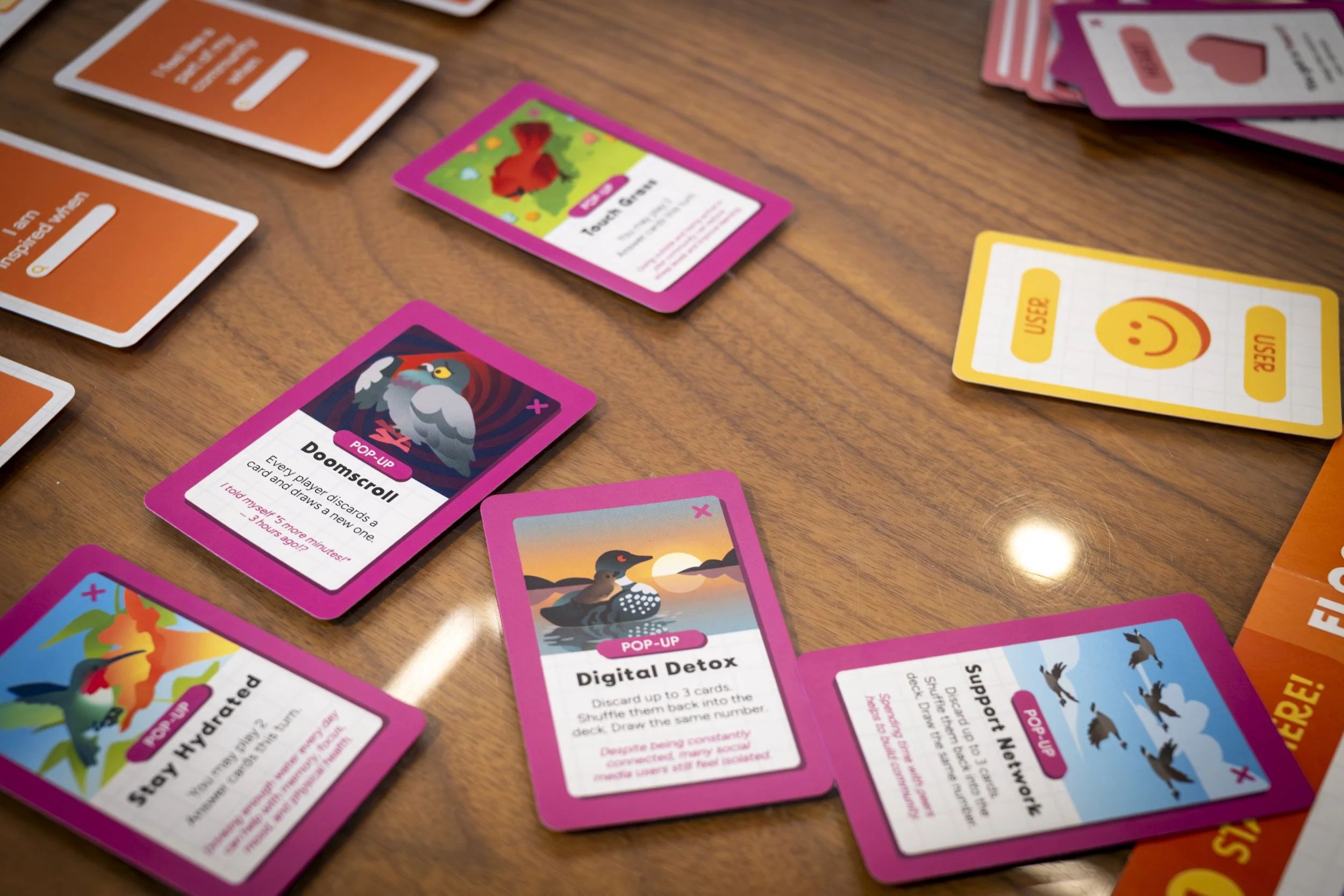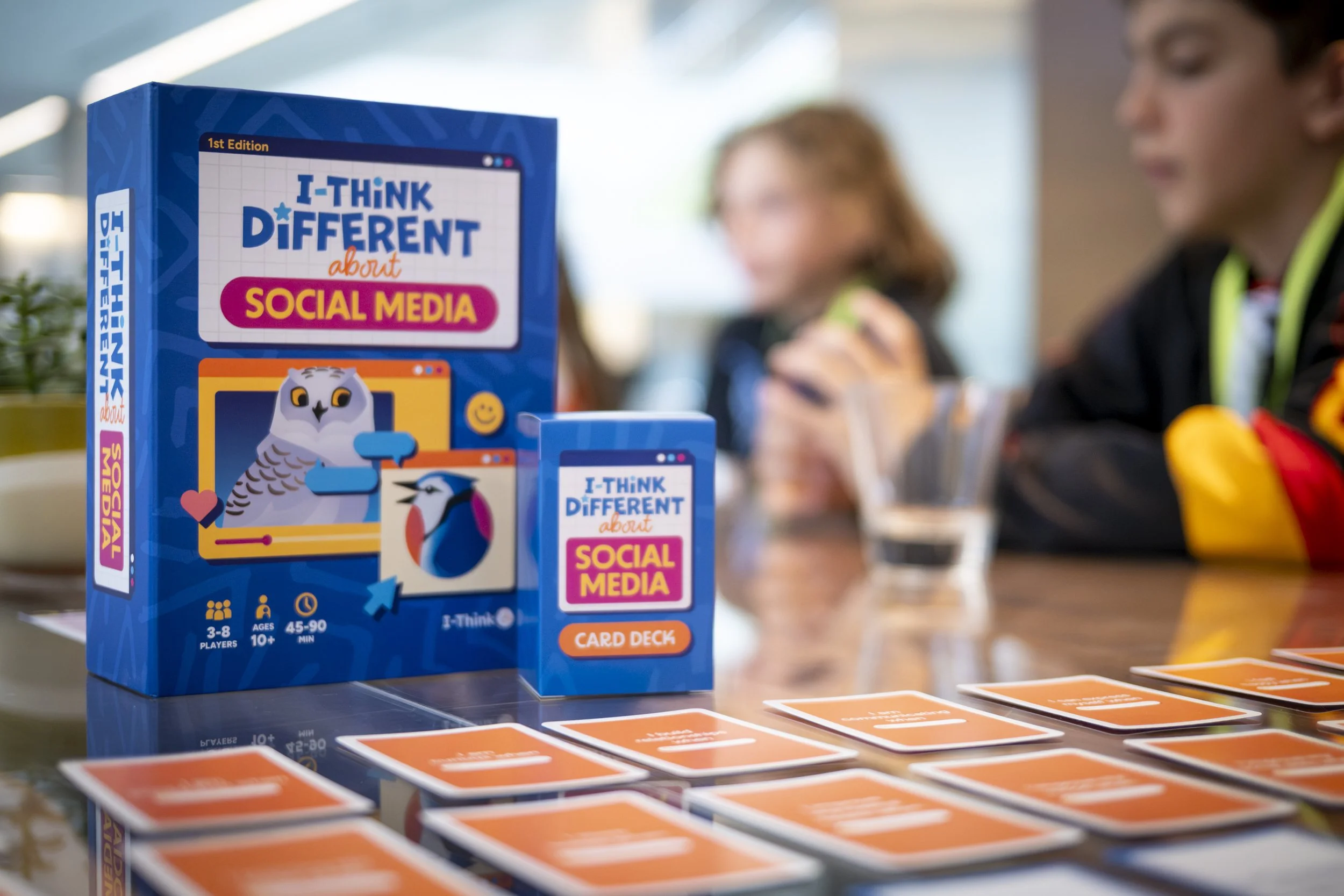Board Game Case Study
What it takes to build a board game on the issues that matter most to young people
Picture this, we were deep in the details of a custom Social Media Challenge Kit rollout with the Waterloo Catholic DSB, when the Board announced that teachers would not be released for the remainder of the school year. The province-wide supply teacher shortage added a surprising constraint to our collaboration.
I-Think proposed an Integrative Thinking Board Game. For years we had whispered about how wonderful it would be for there to be an I-Think game. The remarkable Innovation Team at the Waterloo Catholic DSB said yes.
Then, we had to create it. Bringing together experts in well-being, Integrative Thinking and board game design, as well as a visual designer and the Innovation Team at the WCDSB, we were off to the races. Six weeks later, the board game went to print.
Students Creating Content
With over 100 cards to fill, the board game needed content that was real, engaging, age-appropriate and student-approved. We turned to students across each high school in the Board and hosted 150 students for a Student Leadership Day. The day had two parts:
1) Learning About Social Media
In the morning, students played an idea generation game to build connections and get in the creative mindset. Then, students in each group learned about the topics of:
Peer Support
Adolescent Brain Development
Substance Use Health Spectrum
How Habits are Built
The Impact of Technology on Mental Health
From this information, students identified what facts they found most affirmed, challenged and extended their thinking on the topic. We used this information to decide on the facts shared on the game’s Pop-Up Cards.
2) Applying the Learning to a Pro-Pro
In the afternoon, students applied that learning to a tool we call the Pro-Pro Chart. Their guiding question was: How might we design our social media use? with the Opposing Models being: Strict Limits vs. Anything Goes. Students were applying their learning from the morning to their benefits. We had a team of 10 adults going from group to group, identifying unique benefits that groups were coming up with. These were not the “best” benefits. Instead, we looked for ideas that were different from one another.
These benefits became the inspiration for the Search and Answer content in the game. When finalizing the text of the cards, other students in grade 6 - 9 helped us edit the language to reflect how they speak.
From Methodology to Play
To design the game, we needed to bring together game-play and Integrative Thinking. At its core, Integrative Thinking is about levering tension, gaining new insight by identifying what matters most and creating new possibilities. Game-play, though, was new for us. The only way forward was through prototyping. Lots of it.
We engaged in rapid prototyping, across 6 weeks, 4 prototypes and different audiences. Through prototyping we completely changed the game-play, Persona Cards were added to give perspectives for problem solving, we were missing facts about social media use so we introduced Pop-Up Cards into the game-play, and every prototype we simplified, simplified, simplified.
When you play the game, you can see the benefits and mechanisms from the Pro-Pro Chart in the Search and Answer Cards. The Heart Cards reflect Examine the Models and identifying what benefits are most important. Creating new possibilities with those benefits mirror the Mash-Up, in Build Better Models.
Through prototyping, the game evolved into embodying our framework: bridging theory, design, and practice in a single learning experience.
Playing Again, and Again, and Again
The Waterloo Catholic DSB continues to use the game in the classroom and to support families. The first Family Night of the year was hosted by the Innovation Team in October 2025. They had an expert in social media followed by playing the I-Think Different: About Social Media board game. Over 100 families registered to join.




